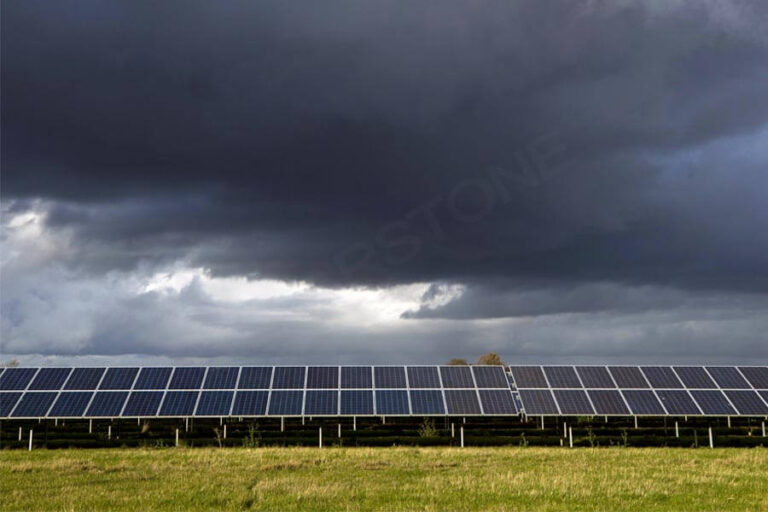Outdoor solar panels are designed to withstand a range of weather conditions, but the level of protection can vary based on the quality and type of solar panels. Here are some common features and design considerations that help outdoor solar panels protect against bad weather.
- Weather-Resistant Materials:
- Solar panels are constructed with durable and weather-resistant materials to withstand exposure to sunlight, rain, snow, and other environmental factors. The materials used are typically chosen to resist corrosion and degradation over time.
- Waterproof Encapsulation:
- Solar panels are encapsulated in a protective layer to make them waterproof. This encapsulation protects the internal components from water infiltration, preventing damage to the electrical connections and ensuring the longevity of the solar panel.
- Tempered Glass:
- The top surface of solar panels is usually made of tempered glass, which is both durable and impact-resistant. This glass protects the solar cells from physical damage, such as hail or falling debris during storms.
- Sealed Junction Boxes:
- Junction boxes, which house the electrical connections, are sealed to prevent moisture ingress. This ensures that the electrical components inside the junction box remain protected from rain and humidity.
- Corrosion-Resistant Frames:
- The frame supporting the solar panels is often made of corrosion-resistant materials, such as aluminum or stainless steel, to prevent rusting. This enhances the structural integrity of the solar panel, especially in regions with high humidity or coastal areas.
- Wind Load Resistance:
- Solar panels are designed to withstand wind loads and are often tested and certified for specific wind speeds. Mounting systems and installation methods are crucial to ensuring that solar panels remain securely attached, even in areas prone to high winds.
- Snow Load Capacity:
- Solar panels are engineered to handle the weight of snow. In regions with heavy snowfall, the design and installation of solar panels consider the snow load to prevent damage or collapse under the weight of accumulated snow.
- Temperature Tolerance:
- Solar panels are designed to operate across a range of temperatures. This includes features to dissipate excess heat during operation and to handle temperature fluctuations without compromising performance.
- Testing and Certification:
- Reputable solar panels undergo rigorous testing to meet industry standards and certifications. These tests may include exposure to extreme temperatures, humidity, and other environmental conditions to ensure the panels can withstand various weather challenges.
Despite these protective features, extreme weather events can still pose a risk to solar panels. Proper installation, adherence to building codes, and periodic maintenance are essential to ensure the ongoing resilience and performance of outdoor solar panel systems.


